How To Get Bigger Wrists: Growth Strategies & Exercises
Author:
Reviewed by:
(21 years of Oly Lifting experience)
Unlock your full potential by engaging with our experts and community! Have questions about your fitness journey or looking for expert advice on weightlifting techniques? Don’t hesitate — leave a comment below and Sergii Putsov will provide a personalized answer and insights to help you reach your goals.
Torokhtiy is reader-supported. Some links are affiliate links, and we may earn a commission at no extra cost to you. See our disclosure page for details.
Imagine Hulk with tiny little wrists and forearms and you’ll understand why their strength and size matter. Although they seem little compared to the rest of your body and you might even overlook any exercises for them, wrists are a big deal when it comes to aesthetics and overall strength.
If you’re wondering how to get bigger wrists – you’re in the right place because that’s exactly what we’re dealing with.
So, how do you go about it and make your wrists more substantial? Well, keep in mind that no exercise can work miracles and change your bone structure, so if you’re thinking of getting huge wrists overnight, do yourself a favor and reset your expectations.
But if all you want to do is bulk up the muscles around your wrists to make them look more robust and improve their functional strength, we have a bunch of practical methods that will do wonders for the muscles and the health of your wrists.
Why settle for small when you can go big, right? Roll up your sleeves and let’s see how to increase wrist size!
How to get bigger wrists? If you want to increase the size of your wrists, you should focus on forearm workouts like wrist curls and reverse wrist curls. Make sure to eat a balanced diet rich in proteins, plus remember to give your muscles time to rest and recover.
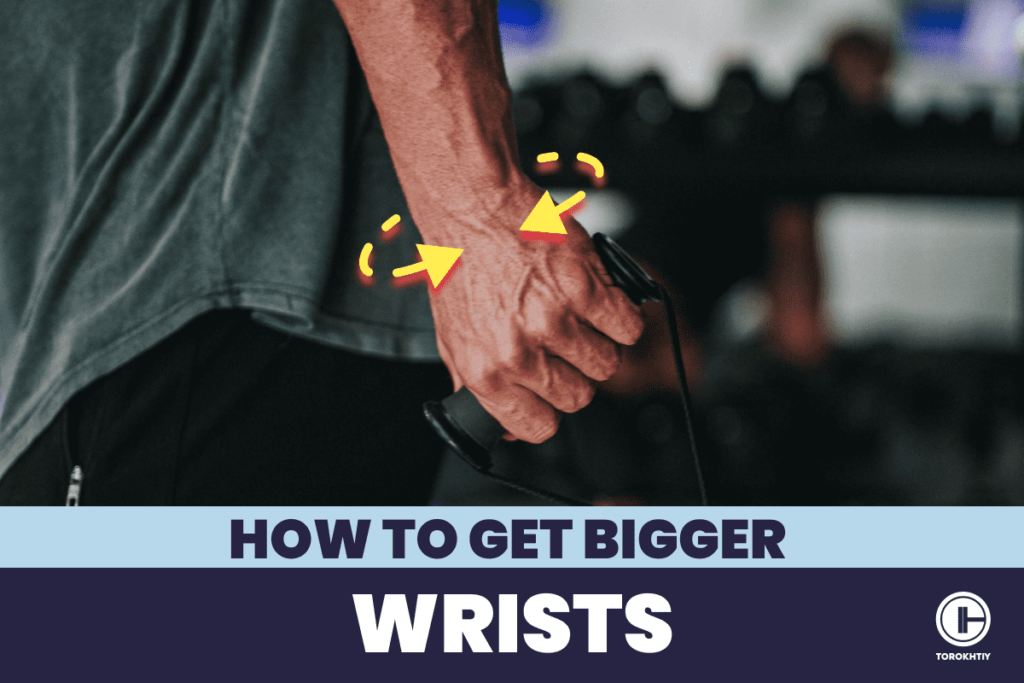
How to Increase the Size of Your Wrists and Forearms?
Be honest – if you’re focused on building a stronger, more muscular body, do you pay that much attention to your wrists? Probably not. You’re more interested in your arms, chest, legs, and so on. But if you neglect smaller areas like wrists and forearms, you’ll put a damper on your overall strength and aesthetic balance. Let’s see how not to forget about the smaller areas on your body and what you can do for your wrists and forearms.
1. Wrist Anatomy
If you really want to target those muscles properly and get thicker wrists, you first need to understand the anatomy. The wrist is made of various bones, like the radius, ulna, and carpals, which form the intricate joint that is responsible for mobility and stability. These bones are surrounded by muscles and tendons, like the flexor and extensor muscles, which control movements like wrist flexion and extension.
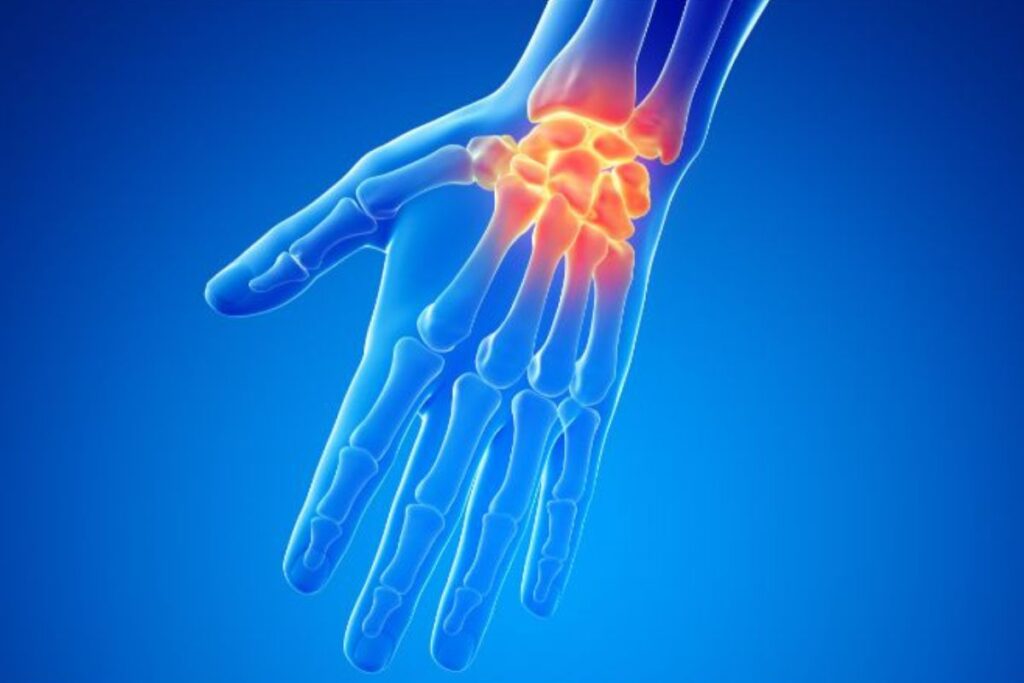
2. What Affects Your Wrist Size?
Ever asked yourself, “why are my wrists so small?” Well, that depends. Several factors come into play when it comes to the size of your wrists. The first one is genetics. Genetics play a big part in determining your bone structure, which in the end affects your wrist size.
Some people have smaller or larger wrists because of genetic predispositions and, as much as we would want to, bone structure is not something you can change, no matter how hard you work out. But genetics is only one of the factors and, as big as it is, there are still other things you can influence to change the size of your wrists.
Muscle mass, which surrounds your wrists and forearms, is definitely one of these things. The muscles affect the size and when you know which exercises to do to target them, it leads to muscle growth (hypertrophy) and this is how you get bigger wrists.
Apart from genetics and muscle mass, body composition is another factor that influences your wrist size. Lower levels of body fat can make your muscles look more defined and prominent. Hormones are another big factor. Testosterone can influence muscle growth throughout your entire body, so if your levels of testosterone are higher, it can facilitate muscle development.
3. Can Your Wrists Actually Grow?
It depends on what you’re trying to do. You can’t do anything about your bone structure so if you’re looking to make your bones grow, well… When you figure that one out, let us know. But just because you can’t alter the size of your bones doesn’t mean that you can’t make your wrists bigger – you can increase their size through muscle hypertrophy.
When you do targeted exercises and follow a balanced diet, you’ll increase the size of the muscles around your bones, which means your wrists will be bigger. So, can you make your wrists bigger? Yes, but be realistic about it.
Follow us!

Free!
Get a 2-week Weightlifting Program as a bonus for the subscription to kickstart your training plan!

Free!
How to Get Bigger Forearms? 7 Proven Ways
Your arms will be bigger and better-looking if your forearms are bigger, but bigger forearms will also contribute to functional strength and grip power. Here are some really practical, tried-and-true ways to get bigger forearms.
1. How Muscles Grow – Principles for Muscle Hypertrophy
Muscle hypertrophy is an increase in muscle size, and it happens as a response to progressive overload, meaning you gradually place more and more tension on your muscle fibers during workouts. When you challenge your muscles with resistance training, there’s microscopic damage that occurs in the muscle fibers, and this damage triggers a whole cascade of physiological processes that lead to muscle repair and growth.
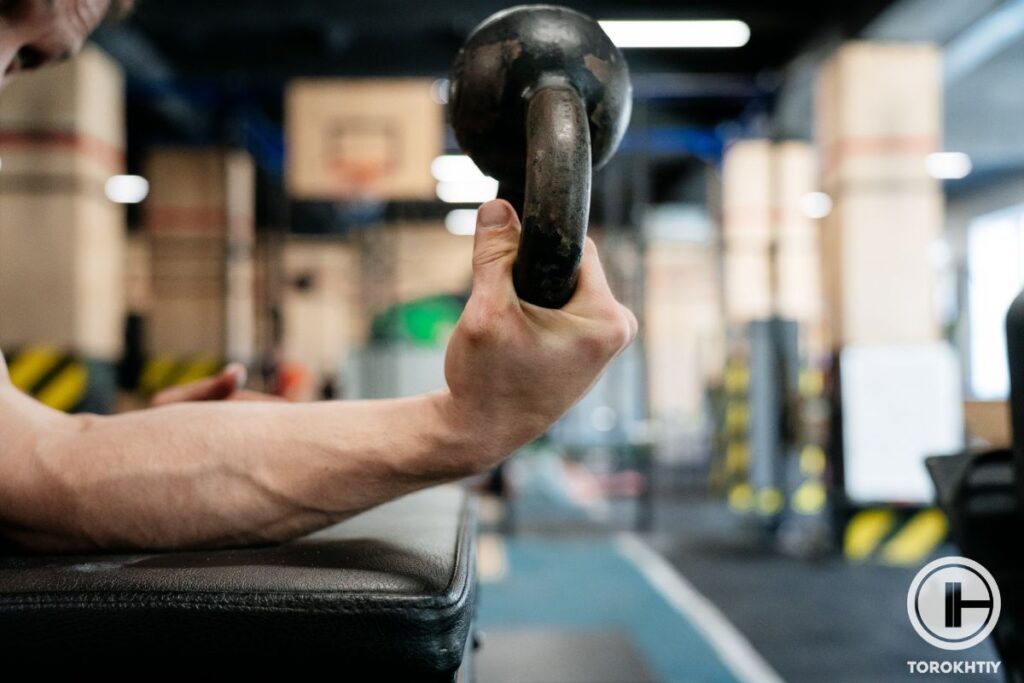
2. Three Mechanisms of Muscle Hypertrophy
• Muscle Fiber Recruitment
This is the first of these 3 principles. As you lift weights, your body recruits muscle fibers to generate the force you need to do the exercise. At first, there’s only a portion of the available muscle fibers that are activated, but as you increase the intensity or lift heavier weights, additional muscle fibers are activated to meet the demands of the exercise.
If you stay consistent with your training, your body will become more efficient at recruiting a greater number of muscle fibers and this increased recruitment leads to greater overall muscle activation, which adds to muscle hypertrophy. This is why everyone preaches consistency – it promotes continued growth and strength gains.
• Metabolic Stress
It is another one of the three principles. Resistance training creates metabolic stress within the muscle cells, which results in accumulation of metabolites like lactate, hydrogen ions, and reactive oxygen species.
This metabolic stress is the result of increased need for energy during intense exercise, and it leads to temporary changes in cellular metabolism. Metabolic stress is important because it stimulates muscle hypertrophy by activating various cellular signaling pathways that are involved in muscle growth.
• Muscle Damage
Lastly, there’s muscle damage, which may not sound like something too positive, but it actually primarily contributes to muscle growth. When your muscles lengthen during tension, it results in microscopic damage to the muscle fibers.
This damage happens mostly during the lowering phase of resistance training, like the eccentric phase of a bicep curl or the descent phase of the squat. This damage triggers an inflammatory response, which initiates the process of muscle repair and growth.
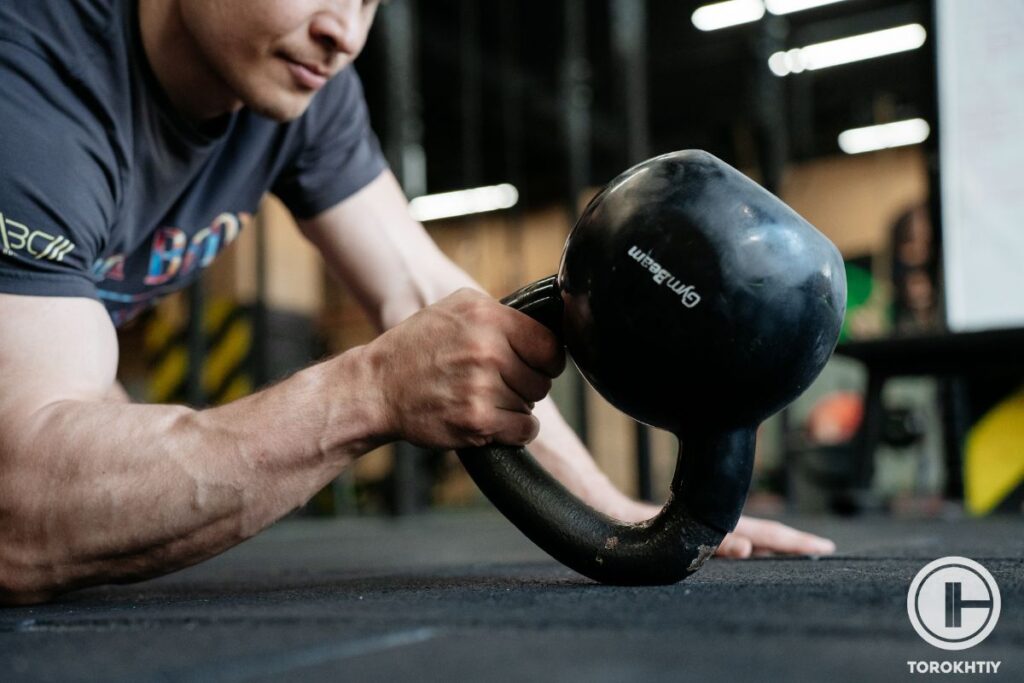
As the damaged muscle fibers repair and regenerate, they adapt by increasing their size and strength so they can withstand the stress of the future exercises better. This process is called muscle remodeling, and ultimately, it leads to greater muscle mass over time.
3. Training Stimulus – Progressive Overload
Progressive overload is the foundation of muscle hypertrophy. To put it simply, you should increase the demands of the workout (more reps, longer duration, heavier weights, etc.) during training sessions to make your muscles adapt and grow. This principle applies to absolutely everyone, from beginners to professionals, and it’s key to continuous progress.
If you’re a beginner, you’ll start with lighter weights and then increase the resistance bit by bit, as your strength and proficiency improve. If you’re advanced, though, progressive overload becomes even more important because you can’t get away from some beginners’ mistakes and there is less room for error.
4. Volume, Intensity, Recovery
Your training routine should be optimized for the best results, so you need a balance of volume, intensity, and recovery. Keep things challenging but manageable, and mix high and low reps for best results.
Intensity is the amount of effort exerted during working out, and it’s often expressed as a percentage of your RM. Super intense workouts usually involve lifting heavier weights for fewer reps, while lower intensity workouts mean you’re lifting lighter weights, but you do more reps.
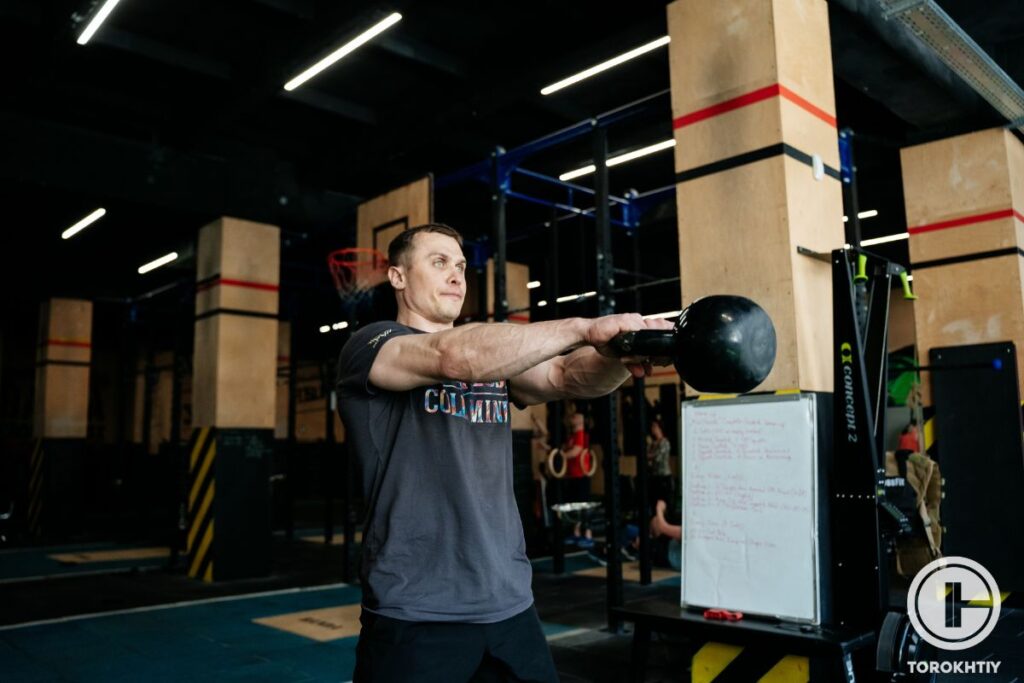
If you want an effective workout, you must balance intensity with correct form and technique. Intense workouts close to failure stimulate greater muscle fiber recruitment and tension, so they’re better at promoting muscle hypertrophy. But keep in mind that progress doesn’t come overnight, so you should avoid lifting weights that can compromise your form or increase the risk of injury.
Volume is another thing that’s important for muscle hypertrophy, and it’s the amount of work you do in a workout – sets and reps. Volume is something that needs to be increased gradually, and you can do it by adding additional sets, reps, or exercises to your workout. The point is, you want to gradually increase the total workload imposed on your muscles, so they get a progressive stimulus for growth.
Recovery and rest are just as important as working out. Give yourself a break and watch Netflix – while you do, your muscles will recover and adapt to your training, which will make them grow, and that won’t influence just your appearance, but also your performance.
5. Exercise Selection and Application – What and How?
Here’s the fun part – the exercises to make wrists bigger. You can do specific ones that target your forearms, you can do ones that engage your entire body, but the best thing to do is to include both in your routine to make it well-rounded.
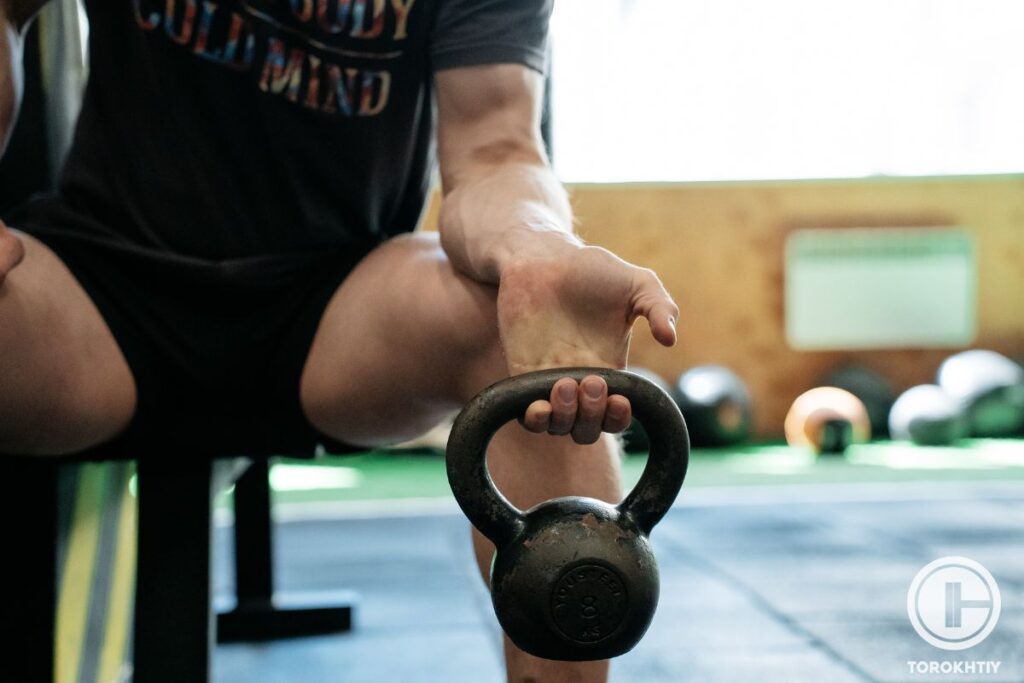
6. Compound Lifts
These engage multiple muscle groups at the same time, so they’re super effective at building overall muscle mass, which includes your forearms.
• Deadlift
One of these are deadlifts, which engage the muscles in your back, legs, and forearms to lift heavy weights off the ground. Since you need to have the barbell under control throughout the lift, it’s important that you have a strong grip, and this is what makes deadlifts so great for forearms.
Tips From the Champ
Try to experiment with different grip positions. For example, alternate between overhand and underhand grip to engage different muscle fibers and promote a more balanced development.
Olympic Weightlifting Champion
They’re simple to do – stand with your feet hip-width apart, bend at the hips and knees and grip the barbell with an overhand grip.
Keep your back flat and chest up. Lift the barbell by extending your knees and hips until you’re upright, then lower it back down with control.
Tips From the Champ
Thick bars and fat grips can make a world of difference and they can enhance your grip strength and forearm development. Both of these increase the diameter of the barbell handle, so your forearms need to work harder to maintain a secure grip.
Olympic Weightlifting Champion
• Pull-Ups
Pull-ups are another great way to improve your wrist strength and size. They’re known for targeting your upper body, but they also engage your forearms as stabilizers.
Start with hanging from a pull-up bar with your hands slightly wider than shoulder-width apart and palms facing away from you. Keep your core engaged and pull yourself up until your chin is over the bar, focusing on using your upper body strength. Lower back down slowly and control the full extension of your arms without letting the muscles relax completely.
7. Specific Exercises
These exercises will directly target the muscles in your forearms for focused hypertrophy and strength development. When you include a few of them into your regular training routine, your muscles develop in a balanced way, and they address certain weaknesses.
• Wrist Curl
Wrist curls are one of the most effective exercises you can do because they target the flexor muscles of the forearm, which are responsible for wrist flexion. Wrist curls do a great job at isolating these muscles and stimulate hypertrophy.
To do them, sit on a bench with feet flat on the floor and your forearms resting on your thighs. Hold a dumbbell in each hand with an underhand grip and palms facing up. Your wrists should kind of hang off the edge of your knees.
Slowly curl your wrists up and bring the weights towards your body while keeping the forearms stationary. Squeeze your forearm muscles at the top of the movement, then lower the weights back down in a controlled manner.
• Reverse Wrist Curl
Reverse wrist curls are another good addition to your training routine, and they target the extensor muscles in your forearms, which are responsible for wrist extension. It’s very important to take some time to strengthen these muscles to prevent imbalances and keep your wrist stable.
It’s pretty much the same as wrist curls, but the other way around. Sit down, rest your forearms on your thighs, and hold a dumbbell in each hand with an overhand grip with palms facing down.
Slowly curl your wrists down, away from your body, but keep your forearms stationary. Focus on contracting the muscles on the back of your forearms as you lower the dumbbells. Raise your wrists back up with control and then repeat for however many times you want.
2 More Training Tips
We’re not done just yet! We’ve gone over the most important information, but there are still a few tips left to share, so stick around.
1. Training Close to Failure
This means that you’ll push yourself to train to the point where your muscles are near exhaustion during each set. This technique maximizes muscle recruitment and stimulation, which means it leads to greater muscle hypertrophy and strength gains over time.
If you’re doing this, it’s extremely important you do each set with correct form and technique and keep going until you can’t do another rep with proper form. It’s important to note that pushing yourself too close to failure can increase the risk of injury and lead to overtraining, so be careful.
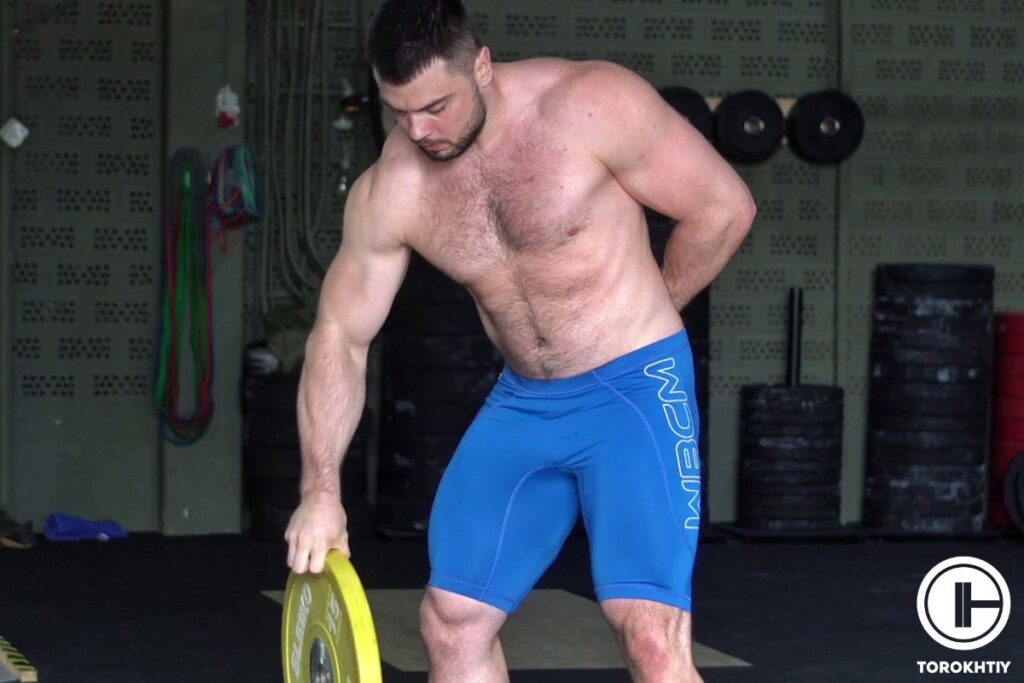
If you’re a beginner or you’ve just never done anything like this before, incorporate this technique gradually and don’t push past your limits. Listen to your body and stop when you feel like you’ve had enough. By failure we mean technique failure.
2. Enough Volume and Recovery
It’s all about balance – enough volume and just the right amount of recovery. If you want your muscles to grow, you need to increase the volume over time, but you also need to rest. It could be tempting to work out every single day, but that won’t give your muscles any time to repair and recover, so you won’t get the results you’re after.
When it comes to volume, you want an amount that gives you enough stimulus for muscle growth, but don’t go too far because that can have an opposite effect and hinder your progress. Increase the volume progressively and allow yourself time to rest so your muscles can recover and replenish glycogen stores, repair damaged tissue, and adapt to your training.
12 to 20 sets in total in a week, rep range from 6 up to even 25 reps each set. Get close to failure and be consistent with it.
FAQ
Is Wrist Size Genetic?
Genetic factors play a big part in the size of your wrists because they determine the bone structure and muscle insertion points. But that doesn’t mean that you can’t make your wrists bigger through targeted strength training exercises that focus on your forearm muscles. The extent to which you can increase the size of your wrists can be limited by genetic predispositions, though.
Is It Ok to Have Thin Wrists?
If thin wrists are okay in your book, then it’s okay. Having thin wrists doesn’t really indicate any health concerns. Thick wrists might give you a more robust appearance, but thin wrists don’t inherently indicate weakness or lack of strength. Your body is unique, so embrace it, and if you really want bigger wrists, then just follow the tips and advice in this article.
Does Wrist Size Increase After 18?
The growth plates in your bones usually close around the time you’re 18-20, so you won’t see much growth past this age. You can still see some slight changes because of things like weight gain, muscle development or changes in body composition. These changes can’t be too drastic, but they can improve the strength and appearance of your wrists.
Conclusion
Hopefully, you weren’t expecting a way to make your wrists triple in size overnight because if you did, you’re probably really disappointed now. If that’s the case, your expectations are pretty unrealistic, and you should know that everyone is unique, and you should learn to love your body as it is – thin wrists or not.
But if you just wanted to know how to improve the health and appearance of your wrists, then you got your answers. Be patient and consistent and don’t push yourself too much. Working out is important, but so is resting. Do you work 7 days a week with no break? No, right? Your muscles shouldn’t, either.
So, do you have anything to share on how to grow wrist size? Is there an exercise you swear by that we failed to mention? Is there anything you need an additional explanation for?
Leave whatever you can think of in the comment section and let’s all get bigger wrists and forearms!
Also Read:
- Master Grip and Wrist Strength with Kettlebell Wrist Workout
- Low Bar Squat Wrist Pain: Reasons & Solutions
- Wrist Pain From Lifting: All Your Questions Answered
- Wrist Support for Push Ups: How to Protect Your Wrists?
- Bench Press Wrist Pain: Reasons, Symptoms, Prevention
- Bench Press Wrist Position: The Beginner’s Guide
- 6 Dumbbell Wrist Exercises for Strength and Stability
- Front Squat Wrist Pain: 7 Reasons & Solutions
References:
- Becks Shepherd “Why are rest days important?” LiveScience, https://www.livescience.com/why-are-rest-days-important (accessed April 8th, 2024)
- Brad J. Schoenfeld, Jozo Grgic, Dan Ogborn, James W. Krieger “Strength and Hypertrophy Adaptations Between Low- vs. High-Load Resistance Training: A Systematic Review and Meta-analysis,” Journal of Strength and Conditioning Research 31, no. 12 (2017): 3508-3523.
- Gerrit Stassen, Lukas Baulig, Ole Müller, Andrea Schaller “Attention to Progression Principles and Variables of Exercise Prescription in Workplace-Related Resistance Training Interventions: A Systematic Review of Controlled Trials,” Frontiers in Public Health, March 25, 2022, Sec. Occupational Health and Safety, Volume 10 – 2022.
- Michal Krzysztofik, Michal Wilk, Grzegorz Wojdała, and Artur Gołaś “Maximizing Muscle Hypertrophy: A Systematic Review of Advanced Resistance Training Techniques and Methods,” International Journal of Environmental Research and Public Health 16, no. 24 (2019): 4897.
- Shalender Bhasin, Thomas W. Storer, Nancy Berman, Carlos Callegari, Brenda Clevenger, Jeffrey Phillips, Thomas J. Bunnell, Ray Tricker, Aida Shirazi, and Richard Casaburi “The Effects of Supraphysiologic Doses of Testosterone on Muscle Size and Strength in Normal Men,” New England Journal of Medicine 335, no. 1 (1996): 1-7.
- Photos made by Torokhtiy Media Team; sciencephoto, Canva.
Why Trust Us?
With over 20 years in Olympic weightlifting, strength training, nutrition coaching, and general fitness our team does its best to provide the audience with ultimate support and meet the needs and requirements of advanced athletes and professional lifters, as well as people who strive to open new opportunities and develop their physical capabilities with us.
By trusting the recommendations of our certified experts in coaching, nutrition, and sports training programming, as well as scientific consultants, and physiotherapists, we provide you with thorough, well-considered, and scientifically proven content. All the information given in the articles concerning workout programming, separate exercises, and athletic performance, in general, is based on verified data.
The product testing process is described in more detail here.
Author: Sergii Putsov
Head of Sport Science, PhD
Best Results: Snatch – 165 kg,
C&J – 200 kg
Sergii Putsov, Ph.D., is a former professional weightlifter and National team member, achieving multiple medals in the 94 kg weight category at national competitions. With a Master’s degree in “Olympic & Professional Sport Training” and a Sport Science Ph.D. from the International Olympic Academy, Greece, Sergii now leads as the Head of Sport Science. He specializes in designing training programs, writing insightful blog articles, providing live commentary at international weightlifting events, and conducting educational seminars worldwide alongside Olympic weightlifting expert Oleksiy Torokhtiy.
Reviewed by: Oleksiy Torokhtiy
Olympic Weightlifting Champion, PhD in Sport Science
Best Results: Snatch – 200 kg,
C&J – 240 kg
Oleksiy Torokhtiy is a professional athlete boasting 20 years of experience in Olympic weightlifting. With multiple European and World titles under his belt, he has showcased his prowess in two Olympic Games (Beijing 2008 and London 2012). Upon concluding his illustrious career, Oleksiy dedicated himself to coaching. By 2022, he had conducted over 200 weightlifting seminars worldwide. He is the visionary behind an international sportswear and accessories brand known for its motto, “Warm Body Cold Mind.” Additionally, he is an esteemed author and the creator of a series of training programs and eBooks.





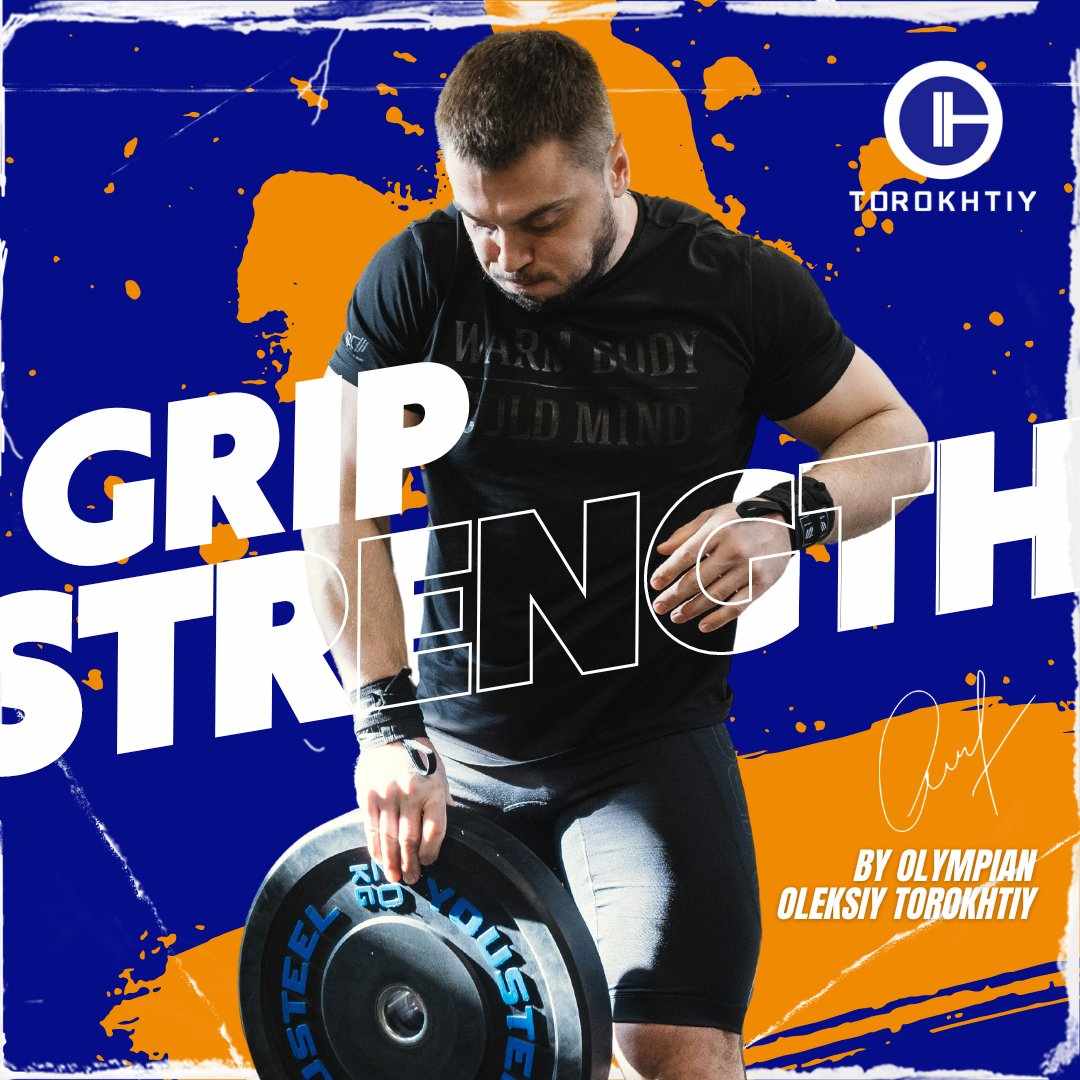
Still have questions after reading our article? Unlock your full potential by engaging with our experts and community! Don’t hesitate — leave a comment below and Sergii Putsov will provide a personalized answer and insights to help you reach your goals.